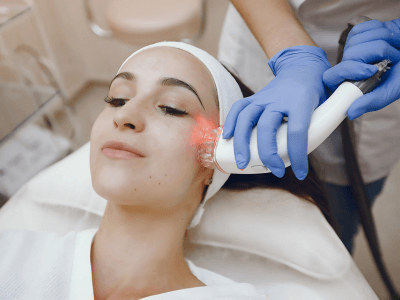Melasma Laser Treatment
- Home/Laser Treatments /Melasma Laser Treatment
Melasma Laser Treatment

Melasma Laser Treatment: A Targeted Solution for Uneven Skin Tone
Introduction to Melasma Laser Treatment
Melasma is a common skin condition characterized by dark, irregular patches on the face, often triggered by sun exposure, hormonal changes, or genetic factors. While melasma can be challenging to treat, advanced laser technologies offer a safe and effective solution.
Melasma laser treatment works by targeting excess pigmentation in the skin, breaking down melanin clusters, and stimulating the skin’s natural healing process. This non-invasive therapy can significantly improve skin tone and reduce the appearance of melasma patches.
How Does Melasma Laser Treatment Work?
Melasma laser treatment typically uses Q-switched Nd:YAG lasers or picosecond lasers, which are specifically designed to address hyperpigmentation without damaging surrounding skin tissue. The laser delivers short bursts of energy that target melanin deposits, breaking them down so the body can naturally eliminate them.
This precise approach minimizes the risk of side effects and ensures effective treatment for even stubborn melasma.
Procedure Steps
Consultation
A detailed consultation is conducted to assess your skin type, the severity of melasma, and your treatment goals.Skin Preparation
The treatment area is cleansed thoroughly to remove impurities.Laser Application
The dermatologist uses the laser device to target melasma patches. Patients may experience a mild tingling sensation during the procedure.Post-Treatment Care
Soothing creams and sunscreen are applied to protect the treated skin.
Benefits of Melasma Laser Treatment
Reduces Dark Patches
Effectively breaks down excess pigmentation, lightening melasma patches.Improves Skin Tone and Clarity
Enhances overall skin tone, giving you a more even and radiant complexion.Non-Invasive and Safe
Minimal discomfort and no downtime, making it a convenient option.Stimulates Skin Rejuvenation
Encourages the production of collagen for healthier skin.
What to Expect During Recovery
Mild redness or sensitivity may occur immediately after the procedure but usually subsides within a few hours. It’s important to follow these aftercare tips:
- Apply Sunscreen: Protect your skin with a broad-spectrum SPF to prevent further pigmentation.
- Use Gentle Skincare Products: Opt for soothing and hydrating products.
- Avoid Harsh Treatments: Refrain from using exfoliants or strong active ingredients.
Who Is a Good Candidate for Melasma Laser Treatment?
This treatment is suitable for individuals with:
- Persistent melasma patches
- Uneven skin tone and hyperpigmentation
- A desire for non-invasive skin improvement
However, pregnant or breastfeeding individuals, as well as those with certain skin conditions, should consult their dermatologist before undergoing treatment.
Preparing for Your Treatment
- Avoid Sun Exposure: Minimize sun exposure for at least two weeks prior to the procedure.
- Discontinue Certain Skincare Products: Stop using retinoids and exfoliants as advised by your dermatologist.
- Stay Hydrated: Drink plenty of water to support skin health.
- Inform Your Dermatologist: Share any medical conditions or medications you are taking.
Post-Treatment Tips
- Apply Sunscreen Regularly: Protect your skin from UV damage.
- Follow Skincare Recommendations: Use gentle products as advised by your dermatologist.
- Be Patient: Results may take a few sessions for optimal improvement.
Why Choose Melasma Laser Treatment?
Melasma laser treatment offers a safe and effective way to manage and reduce hyperpigmentation. With tailored sessions and expert care, you can achieve a clearer and more radiant complexion without invasive procedures.
Conclusion
Melasma laser treatment is a transformative solution for individuals seeking to address stubborn pigmentation and achieve even-toned, glowing skin. Schedule a consultation with our experienced dermatologists to explore how this innovative therapy can be customized to your skin’s unique needs.
